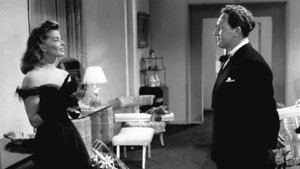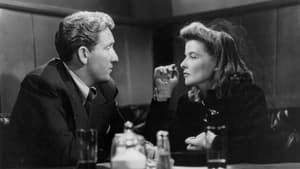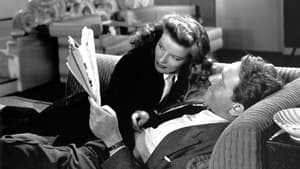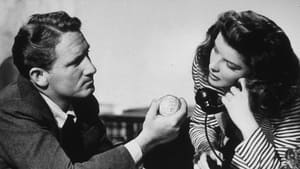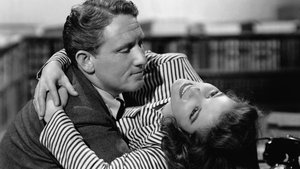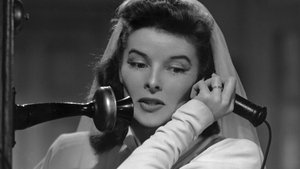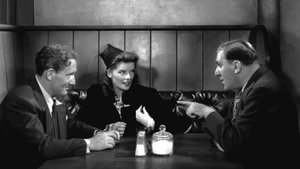Video Sources 0 Views
- Watch trailer
- Woman of the Year 1942 Colorized

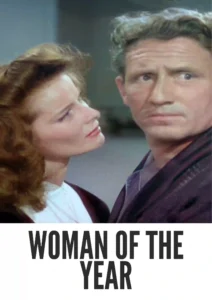
Synopsis
Table of Contents
ToggleSparks Fly in the Newsroom: Woman of the Year (1942) in Stunning Color

Step into the world of sharp wit and sparkling romance with Woman of the Year, a classic romantic comedy from 1942, now beautifully colorized for a viewing experience like never before. Starring Katharine Hepburn and Spencer Tracy, this film delivers a delightful blend of humor, intelligence, and heartfelt moments as a sportswriter finds himself falling for a celebrated political correspondent. This HD download brings a timeless story of love and compromise to your screen. Woman of the Year is also known as George and Tessie.
Woman of the Year Storyline: When Opposites Attract
Woman of the Year tells the story of Sam Craig (Spencer Tracy), a sportswriter for a New York newspaper, who becomes embroiled in a battle of wits and wills with Tess Harding (Katharine Hepburn), a celebrated international political correspondent. Their initial clash over Tess’s dismissive views on sports soon evolves into a whirlwind romance, leading to a marriage that challenges their deeply ingrained beliefs and lifestyles.As Sam and Tess navigate the complexities of married life, their differing priorities and values create both comedic and poignant moments. Tess’s dedication to her career and global affairs often clashes with Sam’s more traditional expectations of domesticity. The film explores themes of gender roles, ambition, and the compromises required for a successful relationship, all while showcasing the undeniable chemistry between its two iconic leads. Woman of the Year is a witty and heartwarming exploration of love in a rapidly changing world.
Movie Cast
The film features a stellar cast of actors who bring this romantic comedy to life:
- Katharine Hepburn as Tess Harding
- Spencer Tracy as Sam Craig
- Fay Bainter as Ellen Whitcomb
- Reginald Owen as Clayton Ring
- William Bendix as Pinkie Peters
Movie Genre
Woman of the Year falls into the genre of romantic comedy, with elements of social commentary and sharp wit that are characteristic of its time. Its intelligent dialogue, engaging performances, and exploration of gender dynamics make it a captivating and thought-provoking film.
Historical Context: Hepburn, Tracy, and the War Era
Released in 1942, Woman of the Year marked the beginning of the legendary on-screen and off-screen partnership between Katharine Hepburn and Spencer Tracy. The film was produced during World War II, a period of significant social change and shifting gender roles. Woman of the Year reflects the era’s evolving attitudes towards women in the workplace and the challenges of balancing career and personal life. The film’s success solidified Hepburn and Tracy’s status as major stars and paved the way for their many subsequent collaborations.
Colorization Details
This colorized version of Woman of the Year has been meticulously restored using modern digital techniques, enhancing the visual appeal while preserving the film’s original charm and wit. The colorization process involved carefully analyzing the grayscale tones of the original black and white footage and assigning appropriate colors to each scene. While the specific software used remains proprietary, the techniques employed included advanced algorithms for color palette selection and image enhancement. This painstaking process brings new life to the characters and settings, making the story even more engaging for modern audiences. While some may debate the merits of colorizing classic films, it introduces these films to a broader audience, ensuring their legacy for future generations.
Technical Details
- Director: George Stevens
- Screenplay: Ring Lardner Jr., Michael Kanin
- Story: John Lee Mahin, Ring Lardner Jr.
- Cinematography: Joseph Ruttenberg
- Edited by: Frank Sullivan
- Production Company: Metro-Goldwyn-Mayer
- Distributed by: Metro-Goldwyn-Mayer
- Runtime: 112 minutes
Technical Specifications
- Download Format: MP4
- Resolution: HD (1080p)
- Compatibility: Compatible with most devices, including smartphones, tablets, computers, and smart TVs.
Reviews and Critical Reception
Woman of the Year (1942) is widely regarded as a classic of the romantic comedy genre and a highlight of Katharine Hepburn and Spencer Tracy’s filmography. Its witty dialogue, engaging performances, and exploration of social issues have earned it critical acclaim and enduring popularity. As a landmark film in the careers of its stars, Woman of the Year remains a beloved and influential work of American cinema.
FAQs
- Q: What is Woman of the Year about?
- A: Woman of the Year is a romantic comedy about a sportswriter who falls in love with a celebrated international political correspondent.
- Q: Is Woman of the Year (1942) a well-known Hepburn and Tracy film?
- A: Yes, Woman of the Year is one of Hepburn and Tracy’s most famous and beloved collaborations, marking the beginning of their legendary partnership.
- Q: Is this version of Woman of the Year colorized?
- A: Yes, this version has been professionally colorized to enhance the viewing experience.
- Q: What makes Woman of the Year interesting for classic film fans?
- A: Woman of the Year offers valuable insights into the social dynamics of the 1940s and showcases the undeniable chemistry between Katharine Hepburn and Spencer Tracy.
- Q: What is the download format?
- A: The download format is MP4, which is compatible with most devices.
- Q: What resolution is the download?
- A: The resolution is HD (1080p), providing a high-quality viewing experience.
Download Now in HD!
Watch Woman of the Year Today!
